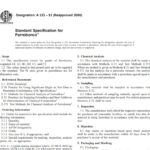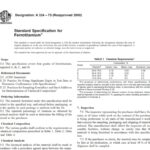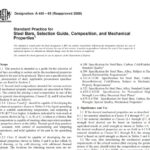Standard Test Methods for
Penetration of Preservatives in Wood and for Differentiating
Between Heartwood and Sapwood1
This standard is issued under the fixed designation D 3507; the number immediately following the designation indicates the year of
original adoption or, in the case of revision, the year of the last revision. A number in parentheses indicates the year of last reapproval. A
superscript epsilon (e) indicates an editorial change since the last revision or reapproval.
1. Scope
1.1 These test methods cover procedures for determining
penetration of preservatives in wood in cases where the demarcation between the treated and untreated wood is not readily
visible. Included are test methods for differentiating the heartwood and the sapwood of wood samples for specific species,
and a test method for differentiating the heartwoods between
the red oaks and the white oaks.
1.2 The procedures appear in the following order:
Procedure Sections
Penetration of Arsenic-Containing Preservatives 6-8
Penetration of Copper-Containing Preservatives 9-11
Penetration of Fluoride-Containing Preservatives 12-15
Penetration of Pentachlorophenol Using 4,48-bis-DimethylaminoTriphenylmethane (DMTM)
16-20
Penetration of Pentachlorophenol Using a Silver-Copper Complex
Known as “Penta-Check”
21-24
Penetration of Solvent Used With Oil-Soluble Preservatives 25-28
Penetration of Zinc-Containing Preservatives 29-32
Differentiating between Sapwood and Heartwood in Pine Species
(Pinus sp.)
33-36
Differentiating between Sapwood and Heartwood in Douglas Fir
(Pseudotsuga menziesii)
37-40
Differentiating between Sapwood and Heartwood in White Fir
(Abies concolor)
41-44
Differentiating Between Woods of the Red Oak and the White Oak
Species
45-48
Determination of Copper in Wood Using Rubeanic Acid 49-52
Determining Penetration of Copper-Containing Preservatives 53-56
Determination of the Presence of Hexavalent Chromium in
Treated Wood
57-61
1.3 This standard does not purport to address all of the
safety concerns, if any, associated with its use. It is the
responsibility of the user of this standard to establish appropriate safety and health practices and determine the applicability of regulatory limitations prior to use.

Click below to download Astm D 3507 – 97 (Reapproved 2000) pdf free
Click here to download Astm D 3505 – 96 (Reapproved 2000) Pdf Free Download






